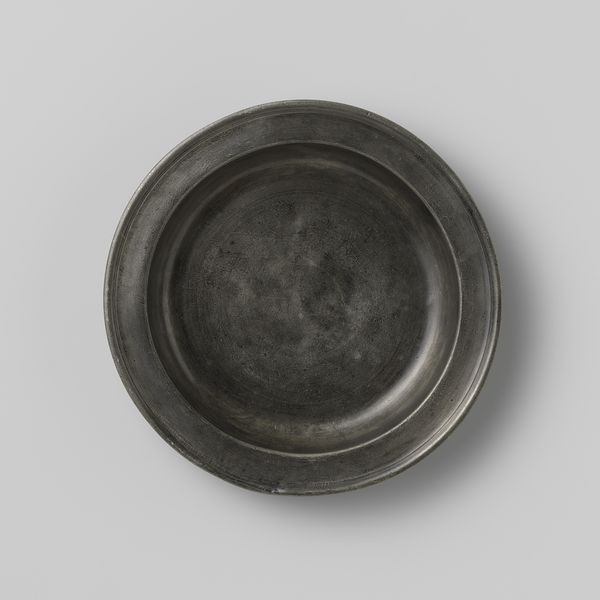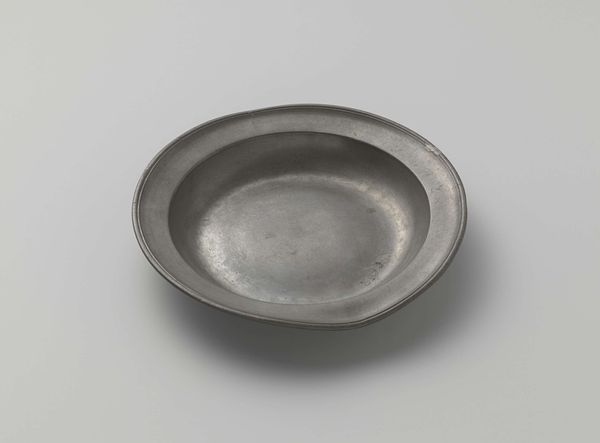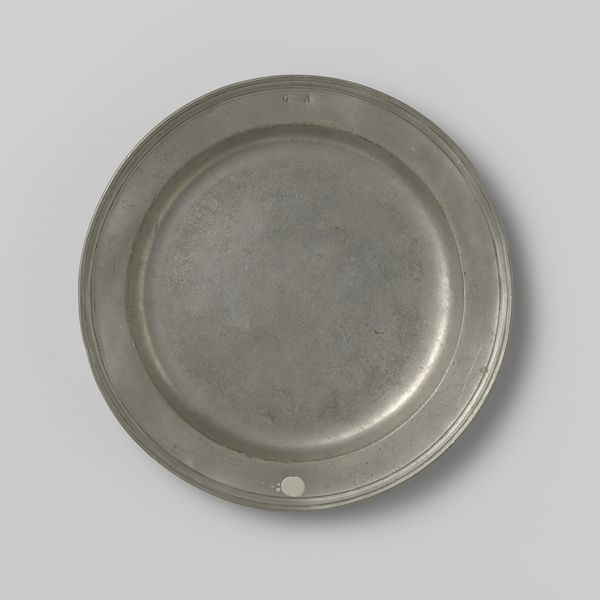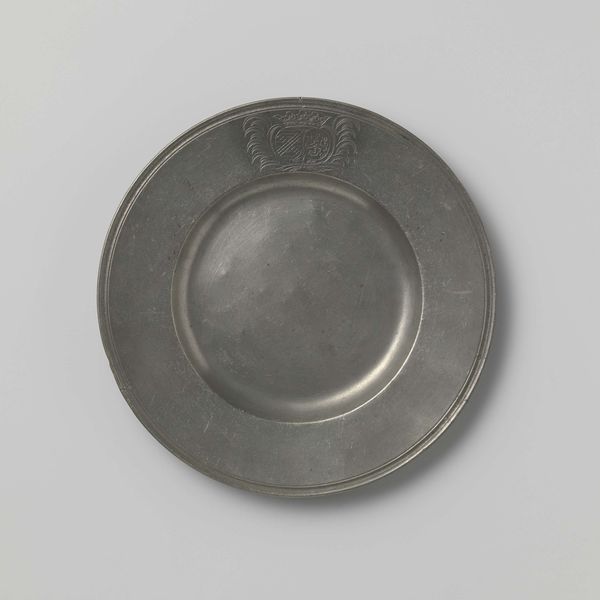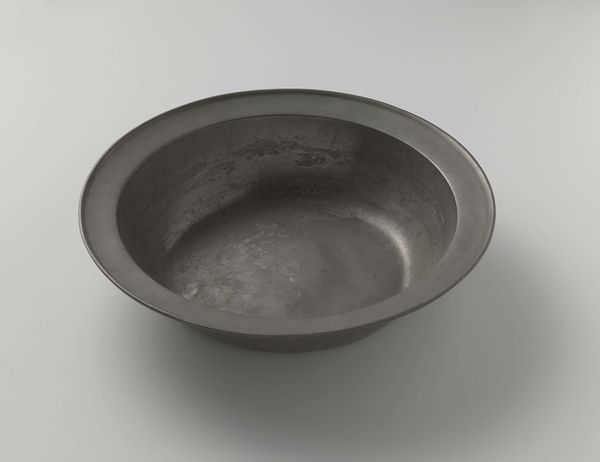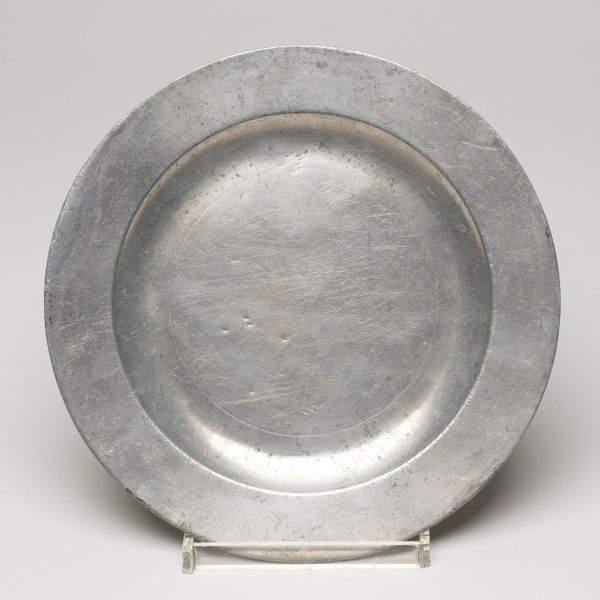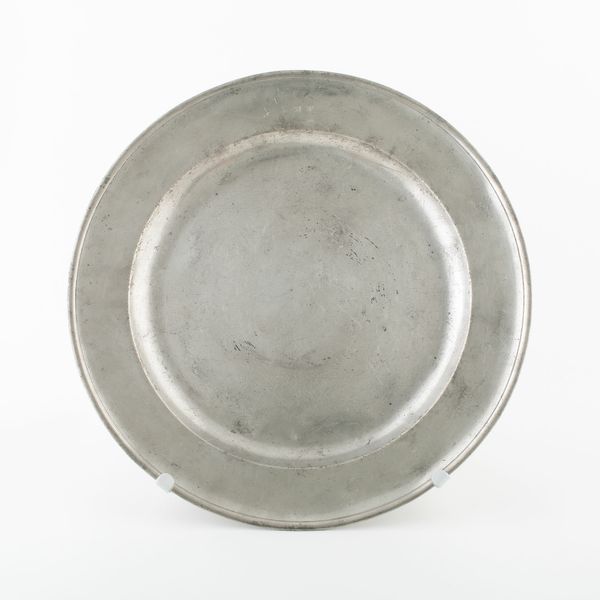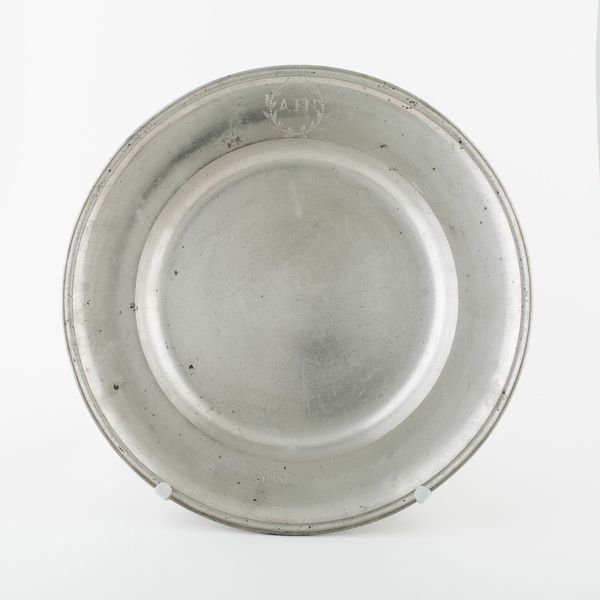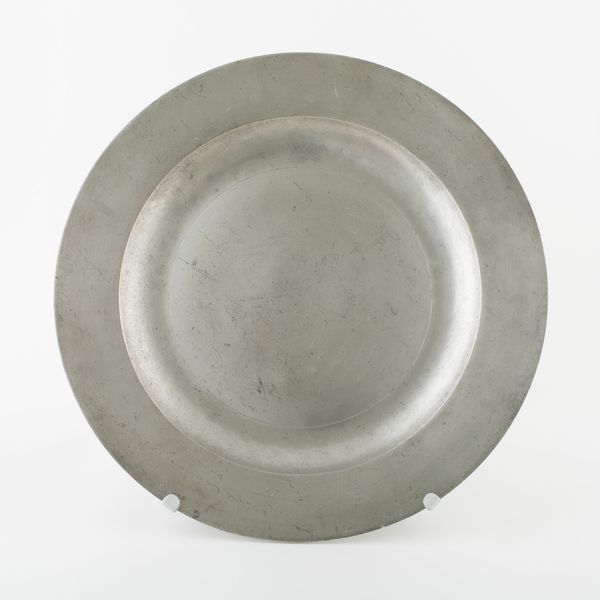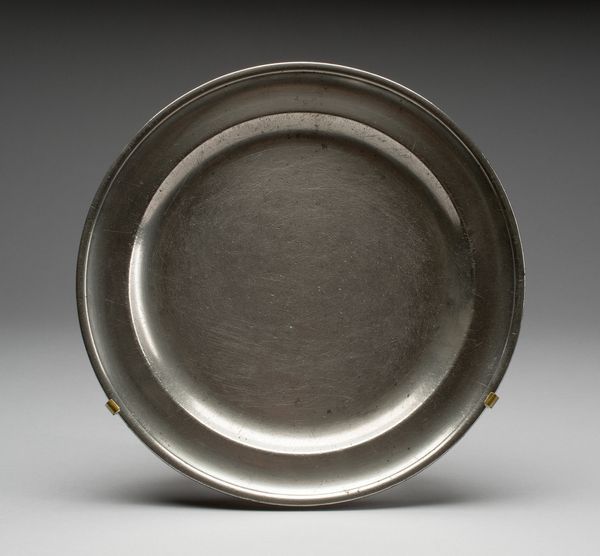
Dimensions: height 3 cm, diameter 25.3 cm
Copyright: Rijks Museum: Open Domain
This pewter plate, made by Martinus Maaldrink in the 18th century, is a fascinating object. Pewter, an alloy of tin with small amounts of other metals, was a common material for functional objects like plates and tankards. Its muted grey sheen and substantial weight gave it a presence that was more accessible than silver, but it certainly elevated dining above earthenware. The plate's raised rim speaks to the process of its creation. Molten pewter was likely cast into a mold, then perhaps spun on a lathe to refine its shape. Consider the labor involved: from the mining of tin to the skilled craftsmanship needed to work the metal. Pewter objects like this one offer a glimpse into the material culture and social hierarchies of the past, a tangible connection to daily life long ago. By looking closely at the making of this plate, we can appreciate how the humblest of objects can be rich with cultural meaning.
Comments
No comments
Be the first to comment and join the conversation on the ultimate creative platform.

